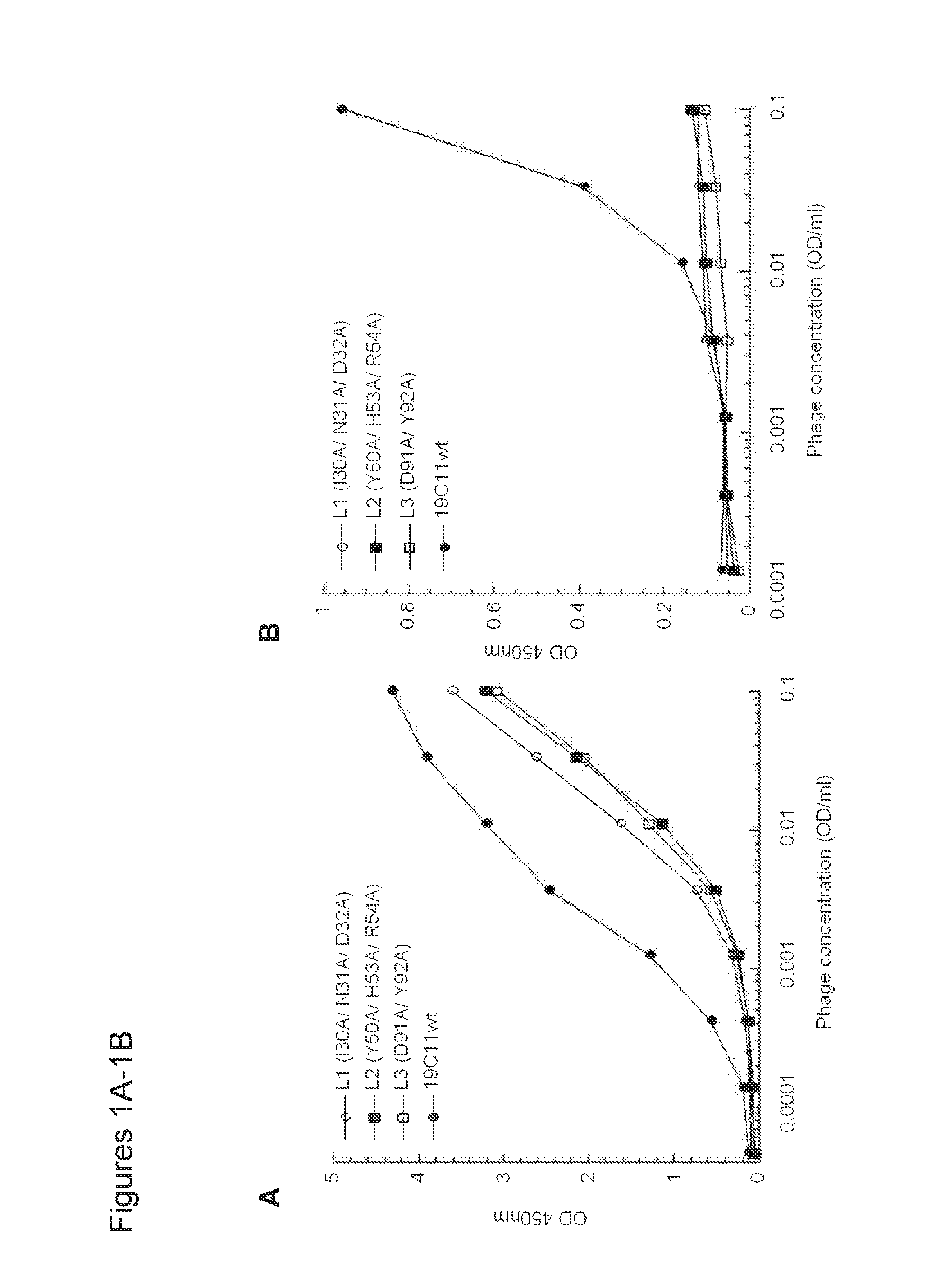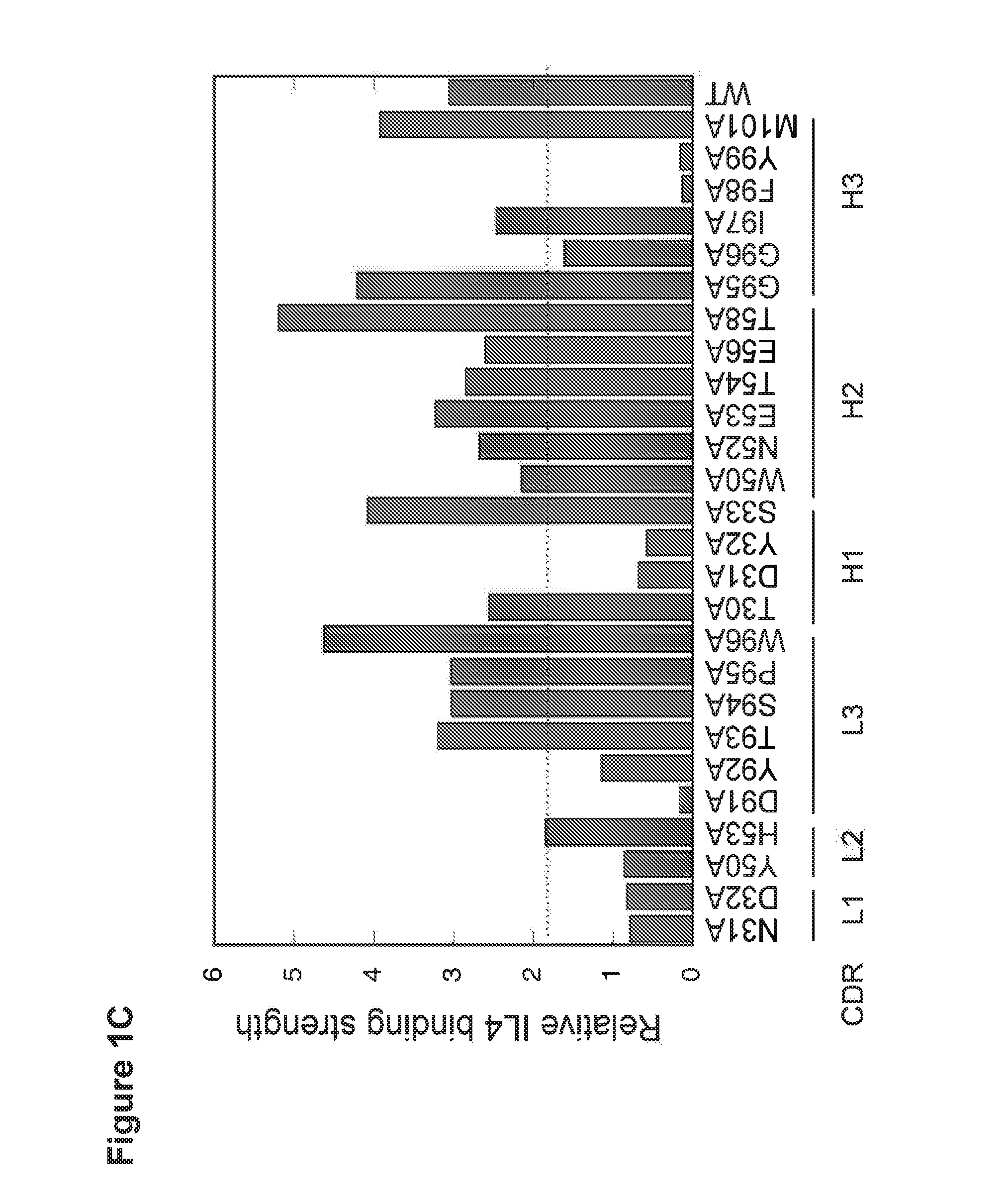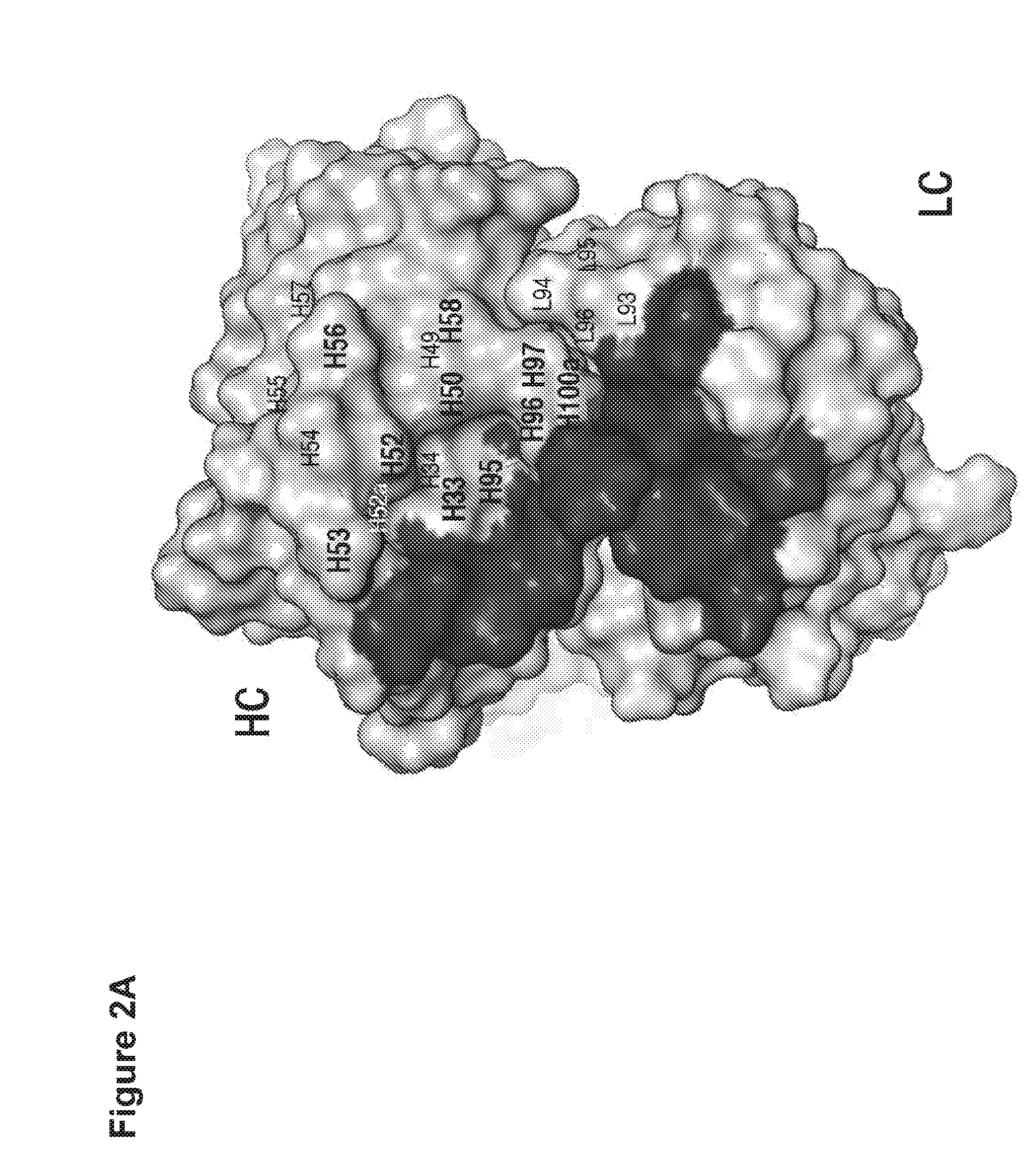Dual specific antibodies
a specific antibody and dual technology, applied in the field of dual specific antibodies, can solve the problems of asymmetry of diversity in the two chains, and achieve the effects of increasing the effector function, stably expressed, and increasing the half life of dual specific antibodies
- Summary
- Abstract
- Description
- Claims
- Application Information
AI Technical Summary
Benefits of technology
Problems solved by technology
Method used
Image
Examples
example 1
Library Design and Construction
[0127]By mutation in the light chain (LC) complementarity determining regions (CDRs), a monospecific antibody can recruit a second binding specificity toward a new antigen while maintaining its primary antigen specificity. Further, the dual binding can be affinity-matured to KD of low nanomolar. This path of engineering dual specificity is well suited for antibodies that mainly utilize the heavy chain (HC) CDRs for binding their primary antigens. Here, we describe a mouse hybridoma-derived anti-interleukin 4 antibody, which heavily depends on LC CDRs for binding energy, and the evolution of this antibody to dual specificity with mutation in the HC CDRs alone or with further mutation in the LC CDRs. One such dual specific variant toward both interleukin 4 (IL4) and interleukin 5 (IL5) is matured to high dual affinity with KD of low nanomolar. The results further highlight the ability of the antibody to evolve dual specificity and demonstrate a generally...
example 2
Evaluation of Library Performance
[0134]To verify the dual binding specificity, the clones B1, E7, F2, and 5A were expressed as IgGs, and binding of the resultant IgGs to the expected antigens but not to several other proteins was confirmed (FIG. 5). We further tested binding specificity by demonstrating minimal binding of IgGs to the human epithelial kidney cell line 293 cells by flow cytometry, which do not express IL4, IL5, and IL13, as well as to baculovirus (BV) particles generated from insect cell lines by ELISA (Hotzel et al. MAbs. 4:753-760, 2012). Furthermore, the IL4 / IL5 dual specific antibodies B1 and E7 along with the monospecific IL5 binding antibody were shown to block IL5 from binding the IL5 receptor α, suggesting that the binding epitopes on IL5 overlapped with that of IL5 receptor (FIG. 6). By surface plasmon resonance (SPR) measurements, the IL4 / IL5 dual specific clone E7 had low affinity toward IL5 (KD=905 nM) but maintaining the high affinity IL4 binding (KD=3.4 ...
example 3
Affinity Maturation of Dual Specific Antigen-Binding Fragment
[0135]To improve the dual affinity of E7, we randomized E7 CDRs through site-directed mutagenesis and displayed the variants on phage for binding selection. Three libraries were generated targeting residues of CDR H2 and CDR L3 (H2 / L3 library), residues of CDR H1, H2 and H3 (H1 / H2 / 1-13 library), or residues of CDR H2 and selected sites in framework region 3 (FR3) of HC (H2 / FR3 library) for randomization as described (Lee et al. J Mol Biol. 340:1073-1093, 2004; Bostrom et al. Methods Mol Biol. 525:1-24, 2009; Lee et al. Blood. 108:3103-3111, 2006) (FIG. 7A). As clone E7 maintained high IL4 binding affinity, we focused the library selection on improving IL5 binding. From the H1 / H2 / H3 library, we found many clones with improved affinity toward IL5 but with greatly reduced affinity toward IL4, whereas clones from the H2 / L3 library and the H2 / FR3 library showed improved IL5 binding without loss of IL4-binding affinity (FIG. 4A)...
PUM
| Property | Measurement | Unit |
|---|---|---|
| Electric charge | aaaaa | aaaaa |
| Electric charge | aaaaa | aaaaa |
| Current | aaaaa | aaaaa |
Abstract
Description
Claims
Application Information
 Login to View More
Login to View More - R&D
- Intellectual Property
- Life Sciences
- Materials
- Tech Scout
- Unparalleled Data Quality
- Higher Quality Content
- 60% Fewer Hallucinations
Browse by: Latest US Patents, China's latest patents, Technical Efficacy Thesaurus, Application Domain, Technology Topic, Popular Technical Reports.
© 2025 PatSnap. All rights reserved.Legal|Privacy policy|Modern Slavery Act Transparency Statement|Sitemap|About US| Contact US: help@patsnap.com



